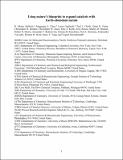| dc.contributor.author | Bullock, R. Morris | |
| dc.contributor.author | Chen, Jingguang G. | |
| dc.contributor.author | Gagliardi, Laura | |
| dc.contributor.author | Chirik, Paul J. | |
| dc.contributor.author | Farha, Omar K. | |
| dc.contributor.author | Hendon, Christopher H. | |
| dc.contributor.author | Jones, Christopher W. | |
| dc.contributor.author | Keith, John A. | |
| dc.contributor.author | Klosin, Jerzy | |
| dc.contributor.author | Minteer, Shelley D. | |
| dc.contributor.author | Morris, Robert H. | |
| dc.contributor.author | Radosevich, Alexander T. | |
| dc.contributor.author | Rauchfuss, Thomas B. | |
| dc.contributor.author | Strotman, Neil A. | |
| dc.contributor.author | Vojvodic, Aleksandra | |
| dc.contributor.author | Ward, Thomas R. | |
| dc.contributor.author | Yang, Jenny Y. | |
| dc.contributor.author | Surendranath, Yogesh | |
| dc.date.accessioned | 2020-10-15T21:49:47Z | |
| dc.date.available | 2020-10-15T21:49:47Z | |
| dc.date.issued | 2020-08 | |
| dc.identifier.issn | 0036-8075 | |
| dc.identifier.issn | 1095-9203 | |
| dc.identifier.uri | https://hdl.handle.net/1721.1/128014 | |
| dc.description.abstract | Numerous redox transformations that are essential to life are catalyzed by metalloenzymes that feature Earth-abundant metals. In contrast, platinum-group metals have been the cornerstone of many industrial catalytic reactions for decades, providing high activity, thermal stability, and tolerance to chemical poisons. We assert that nature's blueprint provides the fundamental principles for vastly expanding the use of abundant metals in catalysis. We highlight the key physical properties of abundant metals that distinguish them from precious metals, and we look to nature to understand how the inherent attributes of abundant metals can be embraced to produce highly efficient catalysts for reactions crucial to the sustainable production and transformation of fuels and chemicals. | en_US |
| dc.language.iso | en | |
| dc.publisher | American Association for the Advancement of Science (AAAS) | en_US |
| dc.relation.isversionof | http://dx.doi.org/10.1126/science.abc3183 | en_US |
| dc.rights | Creative Commons Attribution-Noncommercial-Share Alike | en_US |
| dc.rights.uri | http://creativecommons.org/licenses/by-nc-sa/4.0/ | en_US |
| dc.source | Prof. Radosevich via Ye Li | en_US |
| dc.title | Using nature’s blueprint to expand catalysis with Earth-abundant metals | en_US |
| dc.type | Article | en_US |
| dc.identifier.citation | Bullock, R. Morris et al. "Using nature’s blueprint to expand catalysis with Earth-abundant metals." Science 369, 6505 (August 2020): eabc3183 © 2020 American Association for the Advancement of Science | en_US |
| dc.contributor.department | Massachusetts Institute of Technology. Department of Chemistry | en_US |
| dc.relation.journal | Science | en_US |
| dc.eprint.version | Author's final manuscript | en_US |
| dc.type.uri | http://purl.org/eprint/type/JournalArticle | en_US |
| eprint.status | http://purl.org/eprint/status/PeerReviewed | en_US |
| dc.date.updated | 2020-10-05T12:32:46Z | |
| dspace.orderedauthors | Bullock, RM; Che, JG; Gagliardi, L; Chiri, PJ; Farh, OK; Hendo, CH; Jone, CW; Keit, JA; Klosin, J; Mintee, SD; Morri, RH; Radosevic, AT; Rauchfus, TB; Strotma, NA; Vojvodic, A; War, TR; Yan, JY; Surendranath, Y | en_US |
| dspace.date.submission | 2020-10-05T12:33:03Z | |
| mit.journal.volume | 369 | en_US |
| mit.journal.issue | 6505 | en_US |
| mit.license | OPEN_ACCESS_POLICY | |
| mit.metadata.status | Complete | |
